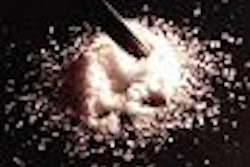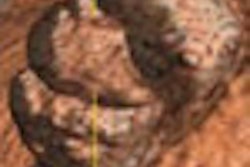Breast Cancer: The Art and Science of Early Detection with Mammography by Laszlo Tabár, Tibor Tot, and Peter B. Dean
Thieme, New York, 2005, $199.95
This book complements two earlier works by these authors, Teaching Atlas of Mammography and Practical Breast Pathology. However, unlike those all-inclusive books, this title focuses exclusively on breast cancer.
Breast Cancer can be read quickly as text is used sparingly and teaching points are masterfully illustrated by images, diagrams and charts. The side-by-side comparisons of mammographic findings, and exquisitely reproduced sub-gross, 3D histologic images, allow the reader to gain a deeper understanding of normal breast anatomy and malignant disease. The value of such comparison cannot be over-emphasized. One chapter is devoted to describing and demonstrating how large-section histology is done.
For radiologists, Breast Cancer details how mammographic patterns and findings are linked to underlying anatomy, as well as demonstrating how to improve mammographic detection of small cancers (those that are usually subtle and most likely curable) by a systematic method of viewing mammograms. A chapter on positioning shows technologists how to get the most information out of each mammographic projection.
The rationale and scientific evidence for mammographic screening are discussed in one chapter using data from the longest follow-up (more than 20 years) of the Swedish Two-County Trial. Dr. Tabár was chief investigator for this randomized, controlled study of breast screening. Here, the effect on detection and outcome of processes, such as morphological heterogeneity, dedifferentiation of cancers with enlargement and varying sojourn times in women at different ages, is explained. Any radiologist involved in breast screening will surely benefit from studying this chapter.
The strengths of Breast Cancer include:
- the presentation of many of the complex issues regarding breast malignancy in relatively easy-to-grasp terms and illustrative images;
- an explanation and scientific documentation of why mammographic screening saves lives; and
- how radiologists can improve their interpretive skills by understanding mammographic anatomy and pathologic changes.
The book does have a few weak points. The use of non-BIRADS terminology may be confusing to an American audience. Also, some discussion of how digital mammography (and other emerging mammographic technologies such tomosynthesis) may impact interpretation and outcomes would be helpful to the reader, and probably prolong the book’s shelf-life.
Breast Cancer will be a much used reference for anyone involved in mammography or breast pathology.
By Dr. John CosciaAuntMinnie.com contributing writer
March 1, 2005
Dr. Coscia is the medical director of the Comprehensive Breast Center at the Harrington Cancer Center in Amarillo, TX.
The opinions expressed in this review are those of the author, and do not necessarily reflect the views of AuntMinnie.com.
Copyright © 2005 AuntMinnie.com



















